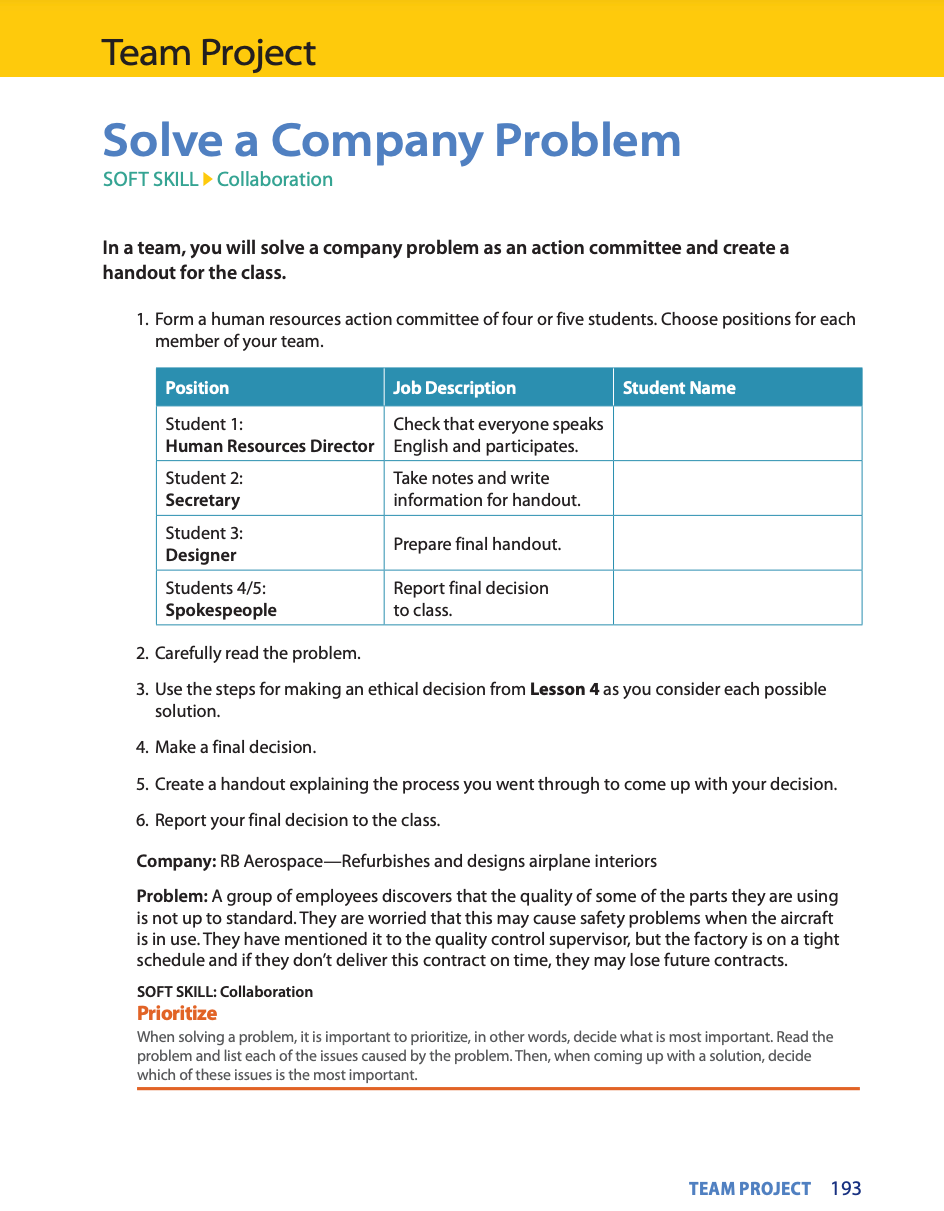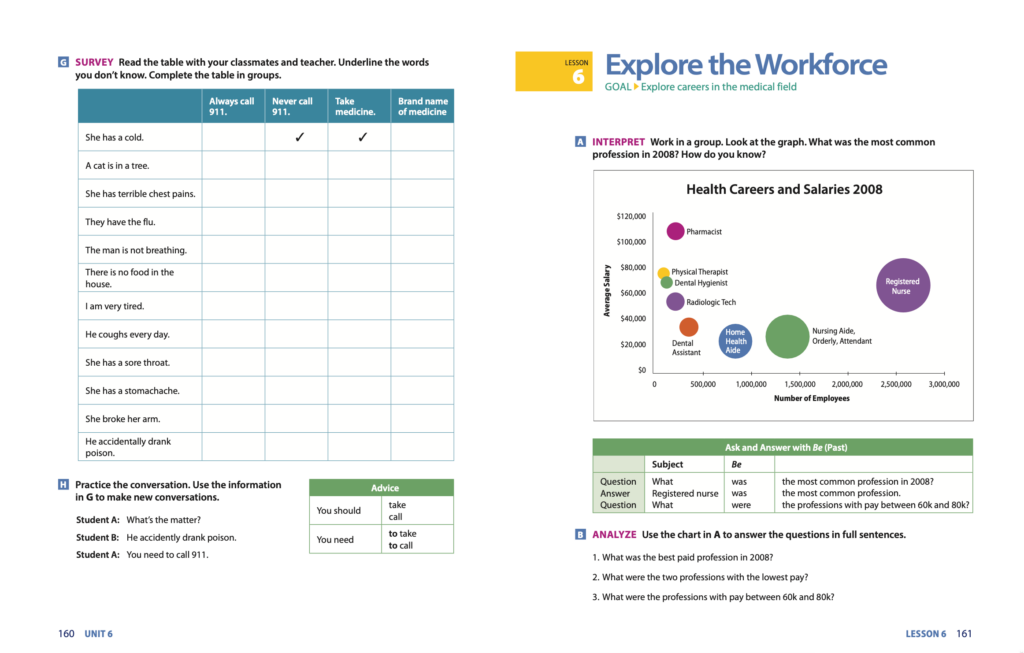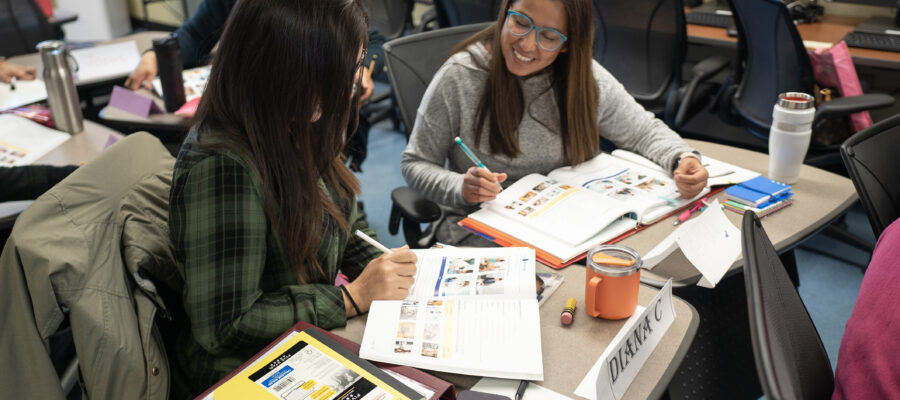Beginning in 1992, the United States developed standards identifying workplace soft skills for workforce preparation. While these standards changed and new ones were introduced, the same underlying skills were always there: critical thinking, collaboration, communication, and technology skills. Below we discuss four ways to address workplace skills in the Adult Education classroom.
#1 Teach Academic Skills
In workshops I give regularly, I enjoy presenting participants with several workplace skills and then asking them to address which ones might be good skills for students in the classroom. A few of them are: combine ideas and information, make decisions and solve problems, exercise leadership roles, manage time, and complete tasks as assigned. Of course, the answer participants give is All of them. We suggest that teachers make the obvious link between workplace skills and academic skills as often as they can. Give students opportunities to lead, to manage tasks, and to solve problems. You can do this in every class, and you might consider incorporating workplace-like simulations where students create projects. In Stand Out, we call these “team projects”. You can find them in every unit.
#2 Teach “Soft Skills“
We teach in context and incorporate soft skills like critical thinking into every lesson, so learning is relevant. These activities are NOT an afterthought that we do if we have time. Students should be collaborating in every lesson. They should be solving problems regularly, and they should be applying what they have learned. Of course, students are asked to fill-in the blanks occasionally and participate in dialogs that require substitutions, but if you stop there, student learning will not be as robust as it could be. As mentioned earlier, these soft skills are the skills they will need in the workplace.

#3 Help Students Make Connections
It is not enough to incorporate these previous ideas. Students should be aware of why they are doing what they are doing. Help them to see the connection between the activity they are doing in the classroom and activities they will be asked to do in the workplace. Point out that they will likely have to work in a team at work and communicate clearly to be successful. For those not pursuing a job, no problem; these skills also help them in life and college!
#4 Help Students See Their Potential
In my experience, students who are asked at the beginning of the term what their goals are, regularly reply that they want to learn English. When probing deeper, students look confused because they haven’t thought that far ahead. If we are satisfied with these responses, we are doing a disservice to our students. Students will be more motivated to learn if they have long-term goals. We suggest that teachers look for ways to introduce their students to opportunities. Help them be aware of career choices. For example, if they are learning about health, we share information about careers like nursing and provide information about average salaries, education, and the size of the workforce. Then we ask them to reflect on what it might be like for them to pursue such a career.
For over thirty years, workforce preparation has been addressed in standards and through funding in the United States. Adult Education programs look for new ways to meet the needs of their students while addressing the Workforce Innovation and Opportunity Act (WIOA). The simple answer to achieving these goals is through effective instruction. Good teaching, simply stated, is when students are actively participating and developing skills which are relevant to life, college, and career.
To learn more about the fourth edition of Stand Out visit ELTNGL.com/StandOut.



